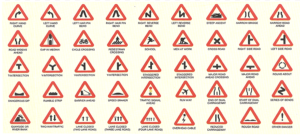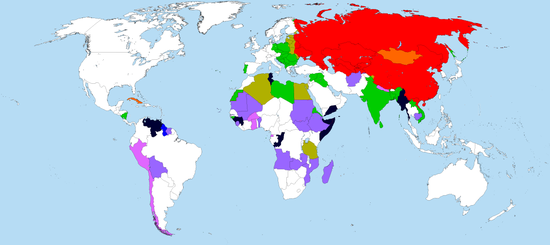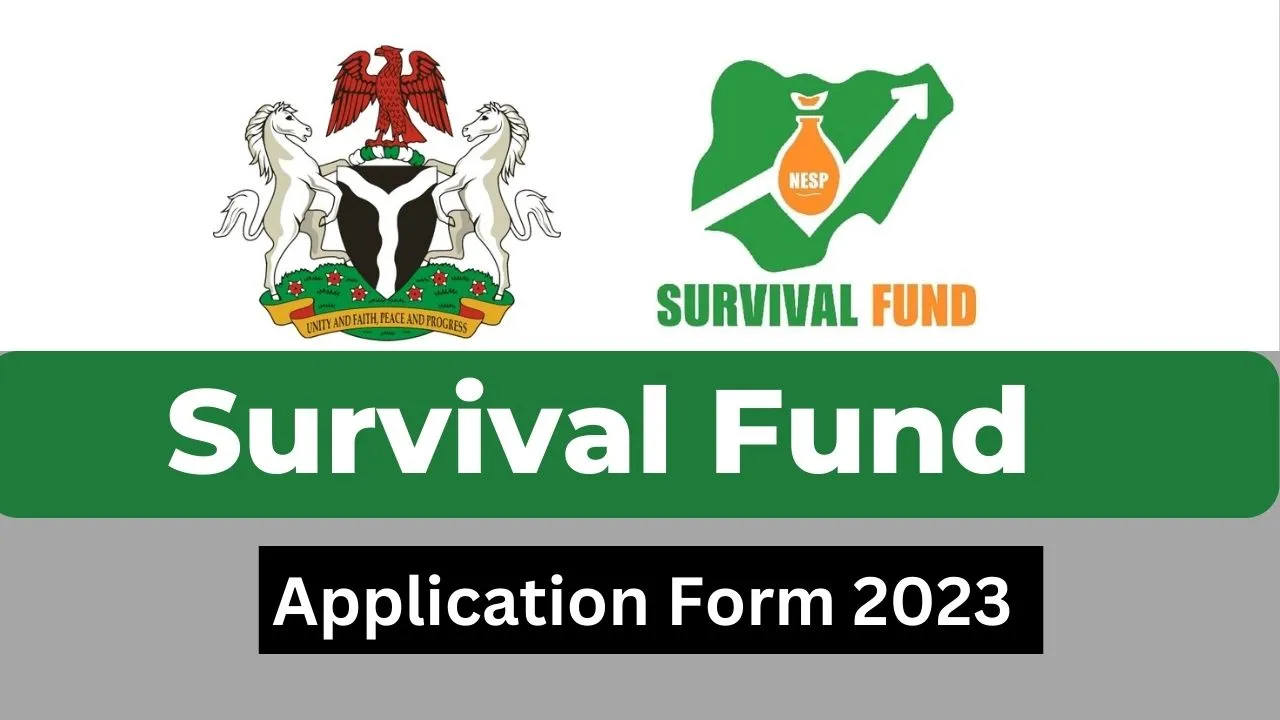Nigerian Road Signs And Their Meanings
Nigerian Road Signs And Their Meanings. How can you recall all of Nigeria’s traffic signs when there are hundreds? Various traffic signs and symbols provide varying amounts of information to drivers; how well do you know these signs? Read this article and thank me later.

What are Road Signs?
For the sake of convenience and safety, traffic signals are shown in the form of symbols and explanatory diagrams. It doesn’t matter whether you’re driving a vehicle, riding a bike, or just strolling down the street; all traffic lights in Nigeria must be obeyed. As a result, they are not available for your use. Because they were born, they are here to stay and be accepted.
Road traffic signs perform a variety of functions, including directing drivers, ensuring their safety and the protection of pedestrians and bicyclists, and providing information about what lies ahead. Signs on the road are a kind of traffic idiom. They convey a precise message to drivers and pedestrians, both of whom are paying attention. Everyone on the road – even pedestrians in certain situations – should know what these signs mean.
It is for this reason that driving schools emphasize the need of educating students about road traffic signals and their significance. Sadly, the majority of Nigerian drivers have not received official training in the art of driving. Road signs may be described as symbols and illustrations that help drivers navigate the roads safely and more easily. Road signs must be obeyed in Nigeria regardless of whether you are driving, riding a bicycle, or just strolling along the street.
Read also: Traffic offences in Nigeria and their penalties
Main types of road signs
1. Signs indicating the presence of regulations
It is common for regulatory signs to have a circular form, and they come in two varieties. Prohibitive signs are those with red and yellow circles. Mandatory signs are those with blue circles but no red border. They serve as both warning and guidance indicators. Regulatory signs must be obeyed and adhered to. The majority of them are either prohibitory or serve as pointers.
More directive and less informative, these signs may be referred to as “traffic control signage.” Newcomers to a city unfamiliar with its unique traffic regulations and punishments generally rely on regulatory signs the most. Traffic signal signs like “No Turn on Red” and “Yield Signs” are also included in this category. You may avoid a parking penalty by reading the rule signs that tell you where to park on the curbside. Detour signs, weigh station signs, and railroad crossing signs are all examples of regulatory signs.
2. Signs of trouble
Triangular warning signs with a red border are common. Warning signs alert you to potential hazards on the road ahead. If you don’t pay attention to these warning signals, your life might be in danger. When an inverted triangle appears, it implies YIELD or GIVES WWAY. Warning Given is becoming more necessary in light of the increasing number of accidents, construction projects, and vehicle breakdowns on the roadways. When a result, other road users might slow down as they approach such sites.
There are warning signs for turn and curve warnings and intersections, merges, and lane changes. There are also signs for bridge clearances and hill warnings. Symbols, rather than words, appear on almost every safety notice.
3. Signs that provide useful information to the public
They generally have a rectangular shape and offer directions. The use of road signs to communicate information about specific locations or situations on the road, such as road construction sites or speed restrictions. When it comes to driving, the only thing that can compare to guide signs is their clarity and legibility. There is no need to take your eyes off the road with this feature.
While GPS guidance might be helpful, fiddling with your phone while approaching a junction of two or three motorways is a risky practice. Diagrammatic guide signs, road junction signs, destination distance signs, and mile markers are all examples of these types of guide signs.
Other Symbol To Watch Out
1. The “STOP” Sign
The form and colour of a stop sign are critical to how it is noticed and interpreted by drivers. The only other sign that is octagonal in form and red in colour is this one. A stop sign’s relevance to traffic safety is why this is done. Alert drivers of crossroads and other places where traffic may be going in different directions.
2. The “Speed Limit” Sign
A vehicle’s maximum or minimum speed must be communicated by the use of a speed limit sign. Depending on the state you’re travelling through, speed limit signage may have different limits. The state may adjust the speed limit on any roadway, so the 55-mph restriction on many of them is only a guideline. Other popular speed restrictions on highways are 45 mph and 65 mph. The posted speed limit is the only one that should be followed by drivers. On a traffic sign, the maximum allowable speed is shown in kilometres per hour (km/h) or miles per hour (mph), depending on the jurisdiction (mph).
3. Yield Sign
Stop signs are common, although yield signs are reserved for less hazardous circumstances. Traffic circles and passive cross streets benefit from yield signs, which enable automobiles from all directions to pass through.
Read also: List of Nigeria vehicle plate number: Abbreviation and Meaning
4. Men at work Sign
The purpose of this sign is to notify vehicles of planned road construction. This sign’s colour is orange because it is one of the most noticeable colours to the human eye and stands out above other traffic signs on the road.
5. No Left Turn Sign
A turn restriction sign, the no left turn sign informs motorists that turning left is banned in order to avoid an accident.
6. No Entry Sign
It’s commonly represented as a red circle with a white rectangle over its face to signal that unauthorised persons aren’t allowed inside. One-way traffic is the most common usage for it.
7. No Overtaking Sign
This sign is often seen on two-way, narrow roads or highways when passing other cars would be very dangerous. They’re also used to mark the location of trees, curves, and dips in the road.
8. No Right Turn Sign
The No Right Turn Sign features a circular restriction symbol to convey the message that turning right at a crossroads or junction is prohibited. They are often utilized in crossroads and junctions when making a right turn may not be safe.
9. No U-Turn Sign
This road sign clearly states that U-turns are not permitted. At this junction, you may perform a left turn, but not a full turn in the other direction.
10. The “Bumps Ahead” Sign
The purpose of this sign is to alert drivers about a bump or uneven road surface ahead. Motorists are urged to slow down at particular locations by this sign.
11. Turn on Red
At junctions where there are traffic lights, this sign is shown. Right turns are permitted even though the traffic signal is red because of this sign. In other words, this sign allows motorists to make a right turn into the next intersection on the right even though the traffic light is red and they must wait for a green signal to turn green.
12. Load restriction sign
For vehicles that weigh more than 5 tonnes, this sign warns that the road may have a bridge that can’t handle more than 5 tonnes, or that the surface is too soft to handle the weight.
13. Narrow Bridge sign
This warning notice is posted in front of a small bridge. The purpose of this sign is to encourage drivers to slow down and take extra caution as they approach the bridge.
14. ‘Y-junction’ Sign
This Nigerian road sign indicates that a crossroads with three routes is ahead.
15. Roundabout Sign
There is a roundabout nearby or ahead if you see this sign.
Read also: Top 10 functions and duties of FRSC on Nigerian roads and contact numbers
Penalties for violating these road signs
| S/NO | TICK INFRINGEMENT (S) | CODE | POINTS | PENALTY | CATEGORY |
| 1 | LIGHT/SIGN VIOLATION | LSV | 2 | 2,000 | 2 |
| 2 | ROAD OBSTRUCTION | ROB | 3 | 3,000 | 1 |
| 3 | ROUTE VIOLATION | RTV | 5 | 5,000 | 1 |
| 4 | SPEED LIMIT VIOLATION | SLV | 3 | 3,000 | 1 |
| 5 | VEHICLE LICENCE VIOLATION | VLV | 3 | 3,000 | 2 |
| 6 | VEHICLE NUMBER PLATE VIOLATION | NPV | 3 | 3,000 | 1 |
| 7 | DRIVER’S LICENCE VIOLATION | DLV | 10 | 10,000 | 2 |
| 8 | WRONGFUL OVERTAKING | WOV | 3 | 3,000 | 1 |
| 9 | ROAD MARKING VIOLATION | RMV | 5 | 5,000 | 1 |
| 10 | CAUTION SIGN VIOLATION | CSV | 3 | 3,000 | 3 |
| 11 | DANGEROUS DRIVING | DGD | 10 | 50,000 | 1 |
| 12 | DRIVING UNDER ALCOHOL OR DRUG INFLUENCE | DUI | 5 | 5,000 | 2 |
| 13 | OPERATING A VEHICLE WITH FORGED DOCUMENTS | OFD | 10 | 20,000 | 2 |
| 14 | UNAUTHORIZED REMOVAL OF OR TAMPERING WITH ROAD SIGNS | UTS | 5 | 5,000 | 1 |
| 15 | DO NOT MOVE VIOLATION | DNM | 2 | 2,000 | 2 |
| 16 | INADEQUATE CONSTRUCTION WARNING | ICW | – | 50,000 | 1 |
| 17 | CONSTRUCTION AREA SPEED LIMIT VIOLATION | CAV | 3 | 3,000 | 1 |
| 18 | FAILURE TO MOVE OVER | FMO | 3 | 3,000 | 1 |
| 19 | FAILURE TO COVER UNSTABLE MATERIALS | FCM | 5 | 5,000 | 1 |
| 20 | OVERLOADING | OVL | 10 | 10,000 | 1 |
| 21 | DRIVING WITH WORN-OUT TYRE OR WITHOUT SPARE TYRE | TYY | 3 | 3,000 | 1 |
| 22 | DRIVING WITHOUT OR WITH A SHATTERED WINDSCREEN | VWV | 2 | 2,000 | 1 |
| 23 | FAILURE TO FIX RED FLAG ON PROJECTED LOAD | FFF | 3 | 3,000 | 1 |
| 24 | FAILURE TO REPORT ACCIDENT | FRC | 10 | 20,000 | 1 |
| 25 | MEDICAL PERSONNEL OR HOSPITAL REJECTION OF ROAD ACCIDENT VICTIM | RCV | – | 50,000 | 1 |
| 26 | ASSAULTING MARSHAL ON DUTY | AMD | 10 | 10,000 | 2 |
| 27 | OBSTRUCTING MARSHAL ON DUTY | OMD | 2 | 2,000 | 2 |
| 28 | ATTEMPTING TO CORRUPT MARSHAL | ACS | 10 | 10,000 | 2 |
| 29 | DRIVING WITHOUT SPECIFIED FIRE EXTINGUISHER | FEV | 3 | 3,000 | 3 |
| 30 | DRIVING A COMMERCIAL VEHICLE WITHOUT A PASSENGER MANIFEST | PMV | 10 | 10,000 | 2 |
| 31 | DRIVING WITHOUT A SEAT BELT | SUV | 2 | 2,000 | 1 |
| 32 | USE OF PHONE WHILE DRIVING | UPD | 4 | 4,000 | 1 |
| 33 | DRIVING A VEHICLE WHILE UNDER 18 YEARS | UDR | – | 2,000 | 1 |
| 34 | RIDING A MOTORCYCLE WITHOUT A CRASH HELMET | RMH | 2 | 2,000 | 1 |
| 35 | EXCESSIVE SMOKE EMISSION | ESE | 5 | 5,000 | 1 |
| 36 | MECHANICALLY DEFICIENT VEHICLE | MDV | 5 | 5,000 | 1 |
| 37 | FAILURE TO INSTALL SPEED LIMITING DEVICE | FSLD | 3 | 3,000 | 2 |
Conclusion
If you’re going to be driving in Nigeria, you’ll need to keep track of all of these road signs and their meanings. Show your road sign handbook if you’re ever summoned by police officers to explain why you didn’t see a regulatory sign, and pledge to keep your eyes on the road at all times!
We Believe This Article Was Helpful, Don’t Hesitate To Share This Information With Your Friends On Facebook, Twitter, Whatsapp and Google plus.
Copyright Warning: Contents on this website may not be republished, reproduced, redistributed either in whole or in part without due permission or acknowledgement. All contents are protected by DMCA.
The content on this site is posted with good intentions. If you own this content & believe your copyright was violated or infringed, make sure you contact us via This Means to file a complaint & actions will be taken immediately.



